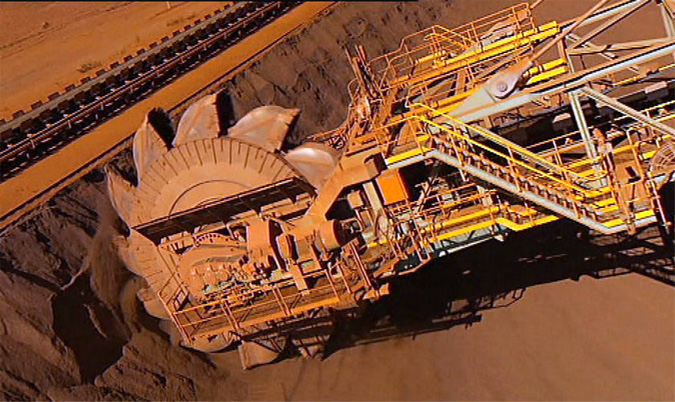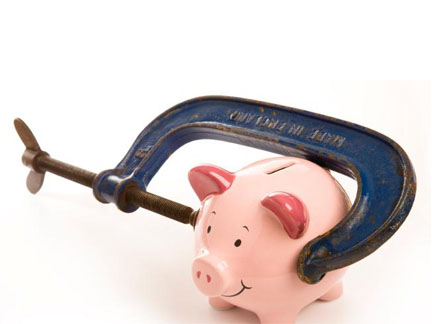
AFTER 23 years, the original Australia-China iron venture has just been renewed.
Bob Hawke, Ross Garnaut and Chinese leaders Hu Yaobang and Zhao Ziyang were involved in the epic effort 23 years ago to land China’s first mining investment in Australia, whose resulting project today launches a new five-year contract.
A large cast of corporate and government leaders from both countries attended the signing in Beijing yesterday of the extension of the $420 million Channar iron ore joint venture, owned 40 per cent by Chinese state-owned metals trading house Sinosteel, and 60 per cent by Rio Tinto.
Among the crowd in Beijing were Australia’s ambassador to China, Geoff Raby, Rio Tinto iron ore chief executive Sam Walsh, Sinosteel chairman Huang Tianwen and president Jia Bao Jun.
A number of Australian firms have worked behind the scenes on the deal for several years.
Sinosteel’s advisers were KPMG Australia, led by its China business practice national chairman Duncan Calder.
Melbourne firm Chambers & Co gave Sinosteel legal advice.
Rio Tinto was advised by Macquarie Capital Advisory executive director Geoff Joyce, with legal advice from Allens Arthur Robinson.
Mr Walsh yesterday described the deal as the latest milestone in Rio Tinto’s long history of close ties with China, now its largest market.
“Rio Tinto first sent a shipment of iron ore from the Pilbara to China in 1973, and the proven strength of a mutually rewarding partnership built on those early days has stood the test of time, as now reflected in this extension of the Channar agreement,” he said.
The Channar deal also underlines the strength of Rio’s relationship with China following disruptions connected with the failed attempt by Chinalco, the largest shareholder in Rio, to double its stake, and the arrest and jailing in March of Rio executive Stern Hu.
Now Rio and Chinalco are working more closely than ever, especially in developing vast copper projects at Simandou in Guinea and, it is widely anticipated, at Oyu Tolgoi in Mongolia.
It is also possible that Chinalco will have an important role in a reopened Bougainville copper mine.
The renegotiation took a painfully long time, almost five years — tracing, as it did, the ups and downs of the broader relationship between Australia and China, which this year has entered calmer waters.
The new deal covers another 50 million tonnes of ore, from what has proved the most productive of Rio’s six such mines in the Pilbara.
The signing of the contract will help cement the position of Sinosteel’s feisty president, Huang Tianwen, which had appeared in doubt over questions about the company’s accounts, causing its stockmarket float to be delayed.
Ambassador Raby recalled in a recent speech that he was working at the Beijing embassy in December 1987 when the Channar deal was concluded — becoming China’s biggest overseas investment.
The mine is near Paraburdoo, where more than 1000 employees are based.
The ore is taken by conveyor belt to Paraburdoo, where it is transported — with product from the mine there and from Eastern Range — by the Hamersley and Robe River railway to the port of Dampier, and then loaded on ships, many headed for China.
Two years ago, the mine was closed briefly as the deepening global financial crisis made Sinosteel reluctant to pay the benchmark contract price for its share of the ore.
Six years ago, a glitch occurred in the joint venture, when Australian rare earths miner Lynas — whose managing director Nick Curtis went on to found the highly successful Sino Gold, one of the first foreign miners to operate profitably in China — conceived a deal to replace Sinosteel as Rio’s partner.
In return, Sinosteel was to obtain Lynas’s rare earths prospects.
But Rio objected, and fought off the play, preserving as its joint venturer a key component of its core market.
Australia’s relationship with China began with the gold rushes of the mid-19th century, when thousands of Chinese workers, mostly from the 13 counties around Canton (now Guangzhou) sailed to the goldfields of central Victoria.
The Victorian legislature in 1855 imposed a pound stg. 10 poll tax on every Chinese person landed in the state. As a result, ships’ captains forced the Chinese to disembark at Robe in South Australia, leaving them 400km to walk to the goldfields. In 1857, nearly 11,000 Chinese people made the hike.
In the late 19th century, BHP was kept alive during a prolonged global downturn by China’s Qing imperial regime sticking to its commitment to buy silver from the Broken Hill mine for its mint.
In 1973, the then CRA — whose name later reverted to Rio Tinto — shipped its first ore, 20,000 tonnes on a test basis, to China from Hamersley in Western Australia in the midst of China’s Cultural Revolution.
After a visit to China four years later, the then CRA chairman, Sir Rod Carnegie, started to think about building a closer relationship with China’s steel industry, possibly through a partnership at the production stage.
That led to Ian Bauert — who in February became Rio’s Shanghai-based managing director in China — being sent in 1983 to Beijing to set up an office there for CRA.
That year, China’s reformist Premier Zhao Ziyang visited Australia and discussed joint venture options with CRA chiefs and with the country’s new prime minister, Bob Hawke.
The following year, Mr Hawke visited China, with development of the iron and steel relationship a major focus of his conversations with Chinese leaders.
Although Minmetals had been China’s main buyer of Hamersley ore to that stage, it was the China Metallurgical Import and Export Corp — which later evolved into Sinosteel — that the Chinese government chose as CRA’s partner, as the idea of a joint venture began to develop.
The Channar ore body was identified as the most suitable for Chinese steel mills, and talks got under way.
In 1985, Hu Yaobang, the secretary of the Chinese Communist Party and thus top leader in the formal structure — in which Deng Xiaoping, however, remained the most powerful figure — visited the Channar site.
Ross Garnaut became ambassador to China, and pursued the relationship strongly.
He accompanied Mr Hu to Australia, and with Mr Hawke they stood on the top of Mount Channar.
The joint-venture agreement was finally signed in December 1987, and production began in January 1990, the first shipment being sent from Dampier to Shanghai.
In those days, China was still battling to accumulate the capital needed to participate in such projects.
But since then, the country’s appetite for joint ventures in Australia — and especially, still, in West Australian iron ore mines — has become ravenous, as it has become cash rich while remaining relatively resource poor.
The extension of the Channar contract might appear routine in such a context, but given the high stakes such deals are never completely routine, as is underlined by the length of time it took to complete the negotiation.
It set the pattern for Chinese approval processes, says Melbourne lawyer Robin Chambers, who has represented the Chinese parties in Channar from the start.
Its success helped give the Chinese government confidence in international resource industry processes and has naturally led the way to other deals.
Many prominent Chinese steel industry executives have spent time early in their careers training at Channar, to which they have been seconded.
The signing yesterday seals the intent of Rio to continue this engagement, and provides Sinosteel chief Mr Huang — a strong supporter of increased engagement with Australia — with evidence of success.
www.theaustralian.com.au





